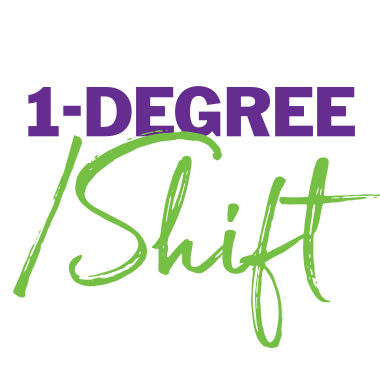Finding it a challenge to carve out time and energy to clarify the path ahead? Do you feel there is too much focus on the short-term vs longer term? You are not alone!
For the past few years, our world has been in a state of confusion, uncertainty & unpredictability. Many of us became trapped in a fire-fighting cycle – constantly running to put out fires as they are happening. Everything these days feels like “top-priority” and “urgent”, and as a result we are expending massive amounts of energy trying to ‘do it all’. This is not sustainable, and likely won’t solve the root problems. How can we regain some control, and get back to a more proactive, strategic perspective? How can we get smarter about how we expend our energy and focus to catalyze meaningful & sustainable change?
“Only once you give yourself permission to stop trying to do it all, to stop saying yes to everyone, can you make your highest contribution towards the things that really matter”, Greg McKeown
It is harder than ever to prioritize. Our to-do lists feel never-ending. We are taking on more each day without giving ourselves the opportunity to set anything down to accommodate for the next new ‘priority’. It’s tough to remove items from our to-do’s! A McKinsey study of 1,500 executives worldwide revealed that just 52 percent said that how they spent their time matched their organization’s priorities. So, the big opportunity for most of us seems to be to reduce and align organizational priorities and translate that into action.
What impact does this ineffective time allocation have on the organization? Bain & Company conducted research on the time budgets of large corporations. At one of the companies, employees throughout the organization were found to have spent 300,000 hours a year supporting a single executive meeting. Their weekly senior leadership meeting directly consumed 7,000 hours of executive time spent in meetings and the prep time required for them, 20,000 hours of supporting unit meetings, 63, 000 hours of team meetings and 210,000 more hours of general prep meetings. Wow!
In a recent poll we conducted with CEOs, the #1 barrier to strategy was clarifying & communicating it effectively
Time is a vital and scarce resource for organizations – it is crucial that we are mindful and intentional with how we spend our time and energy!
So, what can we do as executive leaders to elevate focus and conserve energy? Here are three proven strategic practices to consider:
1. THE POWER OF CRAFTING STRATEGIC INTENTIONS
It is not enough to simply desire a change to occur – we need to be intentional with our strategy & implementation. Our experience in guiding and coaching executive teams is that there is often a disconnect between knowledge and action – something that psychologists call the “intention-implementation gap” or the “knowing-doing gap”. Knowledge is not enough on its own, we need to give it shape and meaning in order for us to craft a solid, actionable intention.
Co-Creating strategic intentions
These days, it feels like everything is top priority. Prioritizing can often feel like a Sisyphean task. Our experience collaborating with executives in the last two years in particular, has revealed the power of co-creating strategic intentions. We are constantly setting organizational goals, but rarely are those desired outcomes translated into a strategic direction everyone can engage with, get excited about. Setting 3-5 strategic intentions co-created by the executive team clarifies the path ahead. It prioritizes not only the what, but also the WHY, and should be something that is relevant for everyone in the organization. Without clear intentions, leaders will continue to take on too much, struggle with workload, and risk burn out. Here is an example one of our 1-DEGREE/Shift strategic intentions for 2022: we will simplify & standardize our business development processes so that we strengthen our client community (through referrals, virtual events and blogs). We have specific goals and activities to support this, but this intention focuses our efforts and helps us determine what to say “no” to.
2. CO-CREATE AN OVERARCHING “FROM-TO” SHIFT
Leading change is tough! There is always so much inertia to stick with the status quo. Too often, we have multiple strategic focal points that feel disjointed, not integrated. Change is always dynamic and is highly emotional. One tool we have found particularly helpful is the FROM-TO shift. A FROM-TO shift supports thought leader John Kotter’s first step in his 8 Steps in Leading Change: create a sense of urgency to help accelerate meaningful change.
This can be applied in many contexts:
a) For an organization as a whole;
b) An executive team;
c) An intact team;
d) For personal transformations.
Understanding the FROM-TO shift
A FROM-TO shift helps clarify and energize the way forward. When we put large amounts of focus into one integrated strategic direction, we are able to achieve two things:
- Clarity – setting an overall intention for all supporting tasks and projects
- Speed – getting results faster when energy is concentrated
This is a powerful & effective tool/process we use primarily to align leadership teams Collaborating on what exactly that shift should be deepens alignment & commitment.
Here is an example from one of our entrepreneurial, high-growth clients:
For the organization in 2022:
FROM collegiate TO professional
For the CEO in 2022:
FROM being in the weeds TO focusing on the horizon
Whenever we can combine a personal executive FROM-TO shift with an organizational shift, we are maximizing engagement and creating the conditions for real breakthrough shifts & results!
In a recent poll we conducted with CEOs, the #1 barrier to strategy was clarifying & communicating the strategy. If we hone in on an overall FROM-TO shift statement for the organization, it becomes much easier to communicate throughout the organization and allows people to make decisions of what is in front of them: “does what I am contemplating help us achieve our FROM-TO shift and/or one of our key intentions?”
Are you clear on what your organization’s strategic focus is for 2022? Could a FROM-TO shift help clarify your path ahead?
3. DRAW ATTENTION TO WHAT TO STOP…OR AT LEAST REDUCE!
The global COVID-19 pandemic has thrown us all into “whack-a-mole” mode – running around trying to keep up with the influx of ‘priority items’, while still holding onto our to-do list from the past few years. We are constantly taking on new initiatives or new goals, but seldom slowing down enough to discuss what tasks we agree to let go or put a pause on in order to shift energy to the new objective. As Greg McKeown says in his book Essentialism: The Disciplined Pursuit of Less, “only once you give yourself permission to stop trying to do it all, to stop saying yes to everyone, can you make your highest contribution towards the things that really matter”. This is a matter of concentrating energy and time into only a few priority objectives to get the highest quality outcome. If our energy is spread thin among the hundreds of tasks on our to-do list, everything on that list is likely to get much less time and attention and the longer it will take to complete them.
A helpful framework to guide the discussion of what tasks can be de-prioritized for the sake of new objectives is the KEEP, START, STOP framework. Using this framework allows us to consider the most vital tasks that need to be kept, what tasks you want to introduce and those that you will stop. In our experience, it is often choosing what to STOP is always the most challenging. If we cannot draw attention to stop tasks & activities, then we must consider how we can at least slow down, delay or reduce them for the sake of a new objective, intention. For example, instead of a weekly team meeting, maybe it’s bi-weekly; or limiting internal meetings to 30 minutes each instead of 1 hour. Or, we can always determine some tools, activities that are lower value. Start with small shifts!
It’s vital to recognize that we are only human and we all have a limited amount of time and energy in a day. We cannot keep piling things on our plate and expect our two arms to be able to carry it – something’s gotta give. Executives can usually figure out the key organizational priorities, but the front line often have too many “projects off the side of the desk” which creates confusion, stress and causes burnout. SMART goals at the top of the organization often look a lot less SMART as you get closer to the customer!
When you consider your desired FROM-TO shift and key strategic intentions in the next 6 months, what can you slow down, reduce or delay so that you can lead in a more focused, healthy and fulfilling way?
We hope you have found these 3 strategic practices helpful. What can you take away so you can double down on your strategic focus for 2022?
If you have energy to connect on this topic, book your discovery call now.
Tim Magwood
1-DEGREE/Shift


